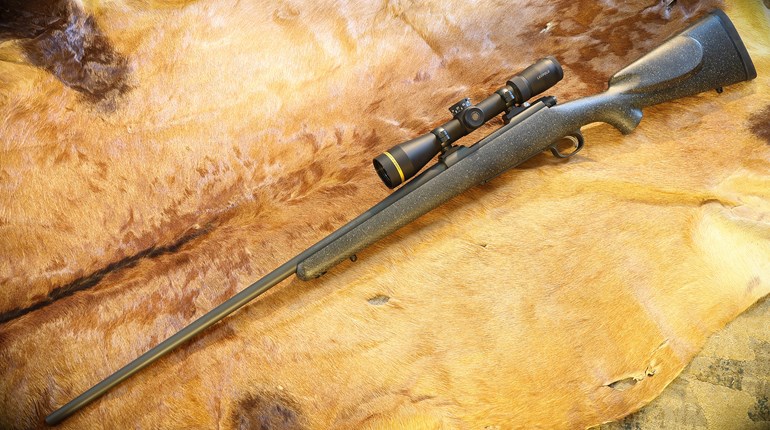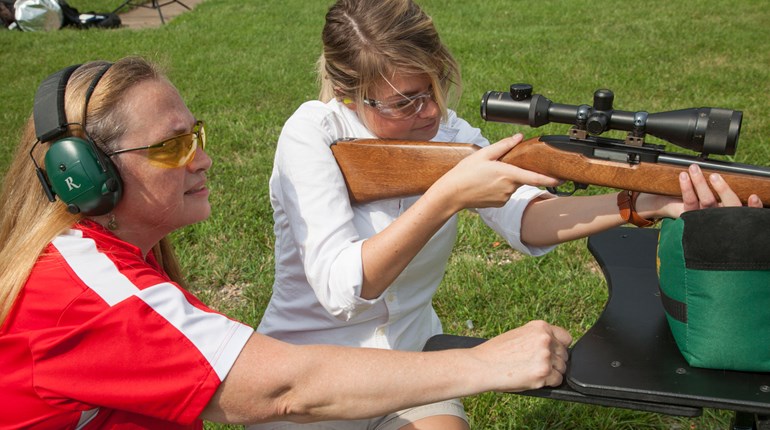
Hunters and shooters have more rifle choices than ever before. Between new calibers, platforms and optics, there is much to choose from. When it comes to styles and aesthetics, there are choices ranging from traditional, modern or space-age. Firearm choices can even be customized to reflect the owner’s personality.
There are three components to a firearm: a stock, an action and a barrel. While choices in actions and barrels are limited, the sky’s the limit when it comes to stocks. For the traditional shooter, there is the classic wood stock. For the modern shooter, synthetic stocks may be more appealing. Lastly, for new-age shooters, there are many laminated stock from which to choose.
Wood Stocks
Pros: Many consider wood stocks more aesthetically appealing than other types of stocks. Wood stocks can be crafted from simple ash or fir, to beautiful walnut or maple, as well as exotic woods.
Wood stocks are easier to customize than other types of stocks. For example, a stock that is too long for the shooter can be easily cut down. Likewise, if a stock needs to be lengthened, spacers and thicker butt pads can be added.

Many types of wood are denser and heavier than man-made materials, which can absorb vibrations and recoil better than other materials. The increased weight of wood over synthetic stocks means less recoil for a shooter. Even a few ounces can make the difference between a comfortable shooting gun and one with excessive recoil.
Cons: Wood stocks can be very expensive. The higher quality and aesthetic appealing the wood, the more expensive it can be. Some blanks (raw wood before it is carved) can cost several thousands of dollars.
Another con to wood stocks is that they can be affected by environmental factors. Natural wood can contract and expand with temperature fluctuations. Extreme heat or dry conditions can cause the stock to become brittle over time and can split or crack when the firearm is discharged. Additionally, humid or wet conditions can cause warpage, cracking or splitting. This is especially true with older firearms where the finish and sealants are worn off.
Wood stocks can easily be damaged if dropped or handled roughly. The wood stock of a rifle can split, crack or break in two if dropped. A damaged wood stock can also affect the accuracy of the firearm. In these scenarios, if a firearm’s wood stock is damaged, the only option is to replace it.
Synthetic Stocks
Pros: The biggest benefit to synthetic stocks is their durability, as they are largely weather resistant. Synthetic stocks do not expand or contract with changing temperatures, which means that shots fired can be more consistent.

Synthetic stocks also can be painted in a variety of colors and patterns. Many consumers opt for camo patterns and colors to blend into their surrounding terrain where they are shooting, especially when hunting. These stocks can also be painted in colors that are the personal taste of the owner, or to represent causes such as pink for breast cancer awareness, or a patriotic red, white and blue pattern.
Maintenance is another benefit of synthetic stocks, as they usually only require a wipe down. These stocks are also less prone to getting scratched or taking on dents or dings.
The weight of a synthetic stock, which tends to be lightweight, can be a pro or a con, but is a definite benefit for traveling long distances in the backcountry.'

Cons: There are negative sides to lightweight synthetic stocks though. The lighter the firearm, the more “felt recoil” the shooter can experience. This can lead to the shooter developing a flinch or pulling his or her shots.
Too, customizing synthetic stocks can be difficult. Outside of adding a smaller or larger butt plate, synthetic stocks are difficult to cut down to shorten the length or adding spacers to increase the length.
Although beauty is in the eye of the beholder, aesthetics can be another con. Many synthetic stocks are plain black. Additionally, some are smooth, and others have a texture. Regardless, few catch your eye as a beautiful piece of wood does.
Laminated Stocks
Pros: Laminated stocks are extremely strong, resistant to environmental conditions such as rain, humidity, dryness and heat. These stocks also resist cracks and breaks if dropped or handled roughly. The durability of these stocks also makes them very stable and better able to absorb vibrations and recoil.
Laminated stocks are also very customizable. Many come in a variety of styles such as with thumb holes so a shooter can maintain a more natural grip.

Cons: The price of laminated stocks can range greatly, usually costing more than synthetic stocks but less than a quality wood stock.
Of the three stock materials, laminate stocks are the heaviest. That is good for reducing felt recoil. Unfortunately, the additional weight over wood stocks is excessive and does little in reducing any additional recoil. The extra weight is also a negative if you have a long walk to your hunting blind or area you will be shooting.

Whichever stock you choose, always find time to go to the range. You need to get used to the feel of your firearm and how it shoots. Whether you are getting ready for deer season or planning to become a more accurate shooter means becoming proficient with whatever firearm you choose to shoot.














































